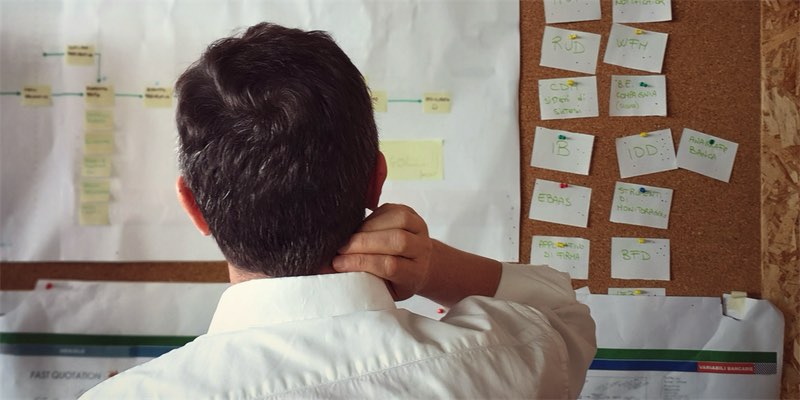What is a presentation in communication? Presentation in communication is the act of presenting a message or topic to an audience. It involves speaking, using visual aids, and engaging with the audience to convey a specific message.
Being concise, using visual aids, speaking confidently, and engaging with the audience are all important aspects of delivering a successful presentation. Additionally, one should be prepared, practice extensively beforehand, and handle questions with ease.
The Most Effective Communication Skills to Present Like a Pro
Do you want to present like a pro? The key to success is effective communication. It’s an essential skill for both personal and professional success. Fortunately, presentation skills in business communication can be developed and improved with practice. What is a presentation in communication? In this post, we will explore the 8 most effective communication skills to help you present like a pro.
From understanding your audience to expressing yourself confidently, you’ll learn everything you need to know to make your presentations successful. Read on to discover how to become a masterful presenter.
Know your audience
Before you present, it is important to take the time to know your audience. Understand who they are and what their interests are. Knowing your audience will help you customize your presentation to appeal to them.
Ask yourself questions like: Who are they? What is their level of knowledge on the topic? Are they primarily interested in the practical application of the topic or more theoretical aspects?
Answering these questions will help you tailor your presentation skills in business communication to make it more interesting and effective. When you have a good understanding of your audience, you can better choose the communication techniques that are best for engaging them.
Make a connection
It is essential to make a connection with your audience when giving a presentation. Take time to get to know them and ask them questions to determine their needs and interests. Try to use examples and stories that will resonate with them and show that you understand their concerns.
Use humour if appropriate and focus on engaging the audience as much as possible. When speaking, focus on being personable and making eye contact with people in the room. Show that you are passionate about what you are presenting and be sure to smile.
Be sure to actively listen to feedback so that you can modify your presentation accordingly. If you make an effort to connect with your audience, you will be able to make your presentation more memorable and effective.
Tell a story
Stories can be powerful tools to help get your point across during a presentation. Not only do stories engage your audience, but they also help to personalize the topic and make it more interesting and memorable. Stories can be used to illustrate your points and give real-life examples of what you are talking about.
When sharing a story, be sure to provide enough detail and keep it focused on the topic of your presentation. Focus on the key elements of the story and how it ties in with your message.
Use the story as an example or analogy to help the audience better understand the information you are trying to present. Finally, be sure to use storytelling techniques like vivid descriptions, suspense, and a moral to bring the story to life and make a lasting impression on your audience.
Use strong words
Strong words can be a powerful tool for delivering an effective presentation. Not only do strong words help to capture your audience's attention, but they also convey your message with clarity and confidence.
When preparing your presentation skills in business communication, think about the kind of words you want to use. Use words that are relevant and make an impact on your audience. Avoid using too much jargon and complex language; this can be off-putting for some listeners. Instead, try to choose words that are interesting and engaging. Also, be sure to vary your word choice to keep your audience interested.
Moreover, don’t be afraid to emphasize certain words. This can help add weight to your point and create a sense of drama or urgency. Paying attention to your volume and pitch when you say certain words can also help create a more compelling presentation.
Using strong words is an important way to communicate effectively in a presentation. It can help you engage your audience and make your message more memorable.
Use body language
Body language is a powerful tool for communication and can add emphasis to your presentation. Pay attention to how you stand, how you hold your arms and even the direction of your gaze. Positive body language conveys confidence and enthusiasm.
Keep your arms open and away from your body. Speak with gestures and move around the room when appropriate. Eye contact is essential – make sure to look at the audience when you’re speaking and establish a connection with them.
Don't be afraid to smile and pause for a few seconds while talking. Your body language should be congruent with what you are saying. Doing so will show that you are comfortable and competent in delivering your message.
Be aware of your voice
Your voice is a key factor in communicating effectively. It can be used to emphasize points and make your presentation memorable. When you're presenting, be conscious of the volume, tone, and pacing of your voice.
Speak loud enough so that everyone can hear you, but not too loudly. Your tone should be confident and conversational. Speak clearly and pronounce each word correctly. Also, vary your speed and pitch to emphasize important points and keep your audience engaged.
Taking pauses in the right places can help people better understand what you're saying. Lastly, don't rush through your presentation, and make sure to take your time. By being aware of how you use your voice, you can make a lasting impression on your audience.
Use visual aids
Using visuals in your presentation is a great way to engage your audience. Visual aids help break up the monotony of talking and can be used to explain complex concepts simply and concisely.
There are various types of visual methods of effective communication ppt you can use, such as photographs, infographics, diagrams, slides, and videos. Make sure to choose visuals that are relevant to your presentation and that can be seen by everyone.
When using visual aids, keep in mind that they should complement what you are saying, not overpower it.
Be sure to practice with the visual aids before presenting so that you can be sure of their impact. By using visual aids in your presentation, you will be able to add depth and clarity to your message.
Practice, practice, practice!
The most important part of delivering an effective communication skills, presentation is practice. It is the key to building your confidence and ensuring that you make the best possible impression on your audience.
Start by writing out your presentation and practicing it alone, then practice in front of family and friends until you are comfortable with your delivery.
Rehearse your presentation several times to familiarize yourself with it and to ensure that you don’t leave anything out. Familiarizing yourself with the material will help you present it confidently and make you appear more competent and professional.
Practicing your methods of effective communication ppt will also help you identify any areas where you can improve, allowing you to make necessary changes and ensure that you are delivering the best presentation possible.
Presentation skills for engaged business communication
What is a presentation in communication? Successful business communication involves more than just knowing the right words to say. To truly engage your audience, you need to know how to effectively deliver your message. Presentation skills are an essential part of effective communication in the business world.
In this post, we will explore 8 communication skills presentations that will help you engage your audience and ensure your message is delivered clearly and effectively. Whether you are presenting to a room full of colleagues or a single client, having strong presentation skills can make all the difference. Read on to learn more about the 8 presentation skills for engaged business communication.
1) The Art of Storytelling
Storytelling is an invaluable tool for making an impact with your business presentations. Telling stories helps to draw your audience in and create a connection with them while making complex concepts easier to understand.
Through stories, you can capture their attention and share your message in a way that will stay with them long after the presentation has ended. When using methods of effective communication ppt stories, be sure to select relevant stories that illustrate the main points of your presentation, and keep them brief so you don't lose your audience's focus.
2) Be Concise
When presenting to an audience, it is important to be succinct. This means conveying your message in the most efficient manner possible.
Avoid going off-topic and include only relevant information. Speak clearly, using language that everyone in the room can understand. Don't rely on jargon or slang to communicate your ideas.
Focus on the main points and keep your presentation as concise as possible. Let your slides do some of the talking, too. Get to the point quickly and finish promptly. Being concise will help you keep your audience's attention and ensure they walk away with your key messages.
3) Use Visual Aids
Visual aids can be an effective way to engage with your audience and illustrate your points. Choose visuals that are easy to understand and keep the text to a minimum. Utilizing charts, graphs, or images can make complex ideas easier to digest.
Use visual aids to bring life to your presentation, help break up the information, and maintain the audience’s attention. Make sure to practice using them so they are not distracting from your key message.
4) Speak with Confidence
When giving a presentation, it's important to speak with confidence. This doesn't mean you need to be overly loud or assertive; it simply means that you need to be sure of yourself and your topic. Projecting your voice and speaking clearly will help ensure that your message is communicated effectively.
Additionally, use body language that indicates you are confident in what you are saying, like keeping eye contact with your audience and maintaining an open, upright posture. With practice, you'll find speaking confidently comes naturally.
5) Engage with Your Audience
When delivering a presentation, engaging your audience is essential for successful communication. Ask questions, make eye contact, and allow for interaction. Incorporating interactive activities like polls or brainstorming can help keep the audience engaged.
Encourage feedback and discussion by using inclusive language like "we" and "us". Invite questions and address them thoughtfully, considering the interests and needs of your audience. Finally, create a dialogue with your audience, and don't be afraid to get creative!
6) Be Prepared
In business communication, it is vital to be prepared. Preparation includes researching your topic thoroughly and having an outline of what you would like to say. Make sure to have a few key points to emphasize and practice presenting them.
Be organized and be able to defend any claims that you make. Finally, plan to ensure that you can accommodate any interruptions or questions. Having the right materials at hand will give you the confidence you need to engage your audience.
7) Practice, Practice, Practice
When it comes to mastering presentation skills in business communication, practice is essential. Not only should you practice out loud until you are confident in your delivery, but also practice different scenarios and answers to potential questions.
Visualize yourself delivering the presentation and anticipate any challenges that could arise. Practicing will help you feel more prepared and confident during the actual presentation. With enough practice, you'll become a master of delivering engaging presentations that leave a lasting impact.
8) Handle Questions with Ease
An important part of any presentation is the Q&A session. Be prepared to answer questions from your audience effectively and confidently. Answer questions completely and honestly, and be sure to explain complex concepts.
If you don’t know the answer to a question, take the time to research it and provide an informed response. By being prepared and providing honest answers, your audience will appreciate your transparency and respect your knowledge.
Summary
Communication is an essential tool for any presentation or speech. It helps to develop trust, gives you the ability to delegate tasks, encourages others to share their ideas, and allows you to have difficult conversations. By practicing effective communication skills in presentation, you can improve your writing skills and get promoted in the process. Communication is a crucial skill that can be used to great effect in presentations and speeches.
Useful Resources: What is an effective presentation | What is written communication | Types of communication formal and informal




















